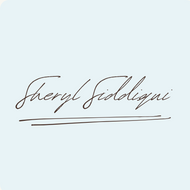In the realm of art, creativity is often perceived as an innate talent possessed by a select few. However, contemporary research and educational practices suggest otherwise: creativity is a skill that can be learned, taught, and developed. This perspective is thoroughly explored in my co-authored book, The Creative Life Book: Reflections on the Art of Living a Fully Expressed Life, particularly in my section on open-ended art and its transformative benefits.
The Science of Learning Creativity in Art
Creativity as a Teachable Skill
Artistic creativity can be nurtured through structured training and practice. Research in psychology and education has consistently shown that creativity training programs significantly enhance creative abilities across various artistic domains (Scott, Leritz, & Mumford, 2004). These programs involve exercises that boost divergent thinking, encourage experimentation, and promote the generation of original ideas.
Neuroplasticity and Artistic Development
Neuroscience provides compelling evidence that creativity can be developed through artistic endeavors. Neuroplasticity, the brain's ability to reorganize itself by forming new neural connections, plays a crucial role in this process. Engaging in artistic activities stimulates different parts of the brain, fostering cognitive flexibility and enhancing the capacity for innovative thinking (Sawyer, 2012). With regular practice and exposure to creative tasks, individuals can enhance their artistic capabilities.
Practical Approaches to Teaching Creativity in Art
Open-Ended Art
In The Creative Life Book: Reflections on the Art of Living a Fully Expressed Life, my section focuses on the transformative power of open-ended art. Open-ended art activities, where there are no predefined outcomes or restrictions, allow individuals to explore and express their creativity freely. This approach nurtures creativity by fostering an environment where exploration and experimentation are encouraged. The benefits of open-ended art include:
Enhanced Imagination: Without rigid guidelines, artists can experiment with different materials and ideas, fostering imaginative thinking.
Improved Emotional Expression: Open-ended art provides a safe space for expressing emotions, leading to better emotional health and resilience.
Increased Confidence: Successfully creating something unique boosts self-esteem and confidence, encouraging further creative endeavors.
Educational Strategies in Art
Art educators play a vital role in fostering creativity. Strategies such as integrating open-ended projects, encouraging curiosity, and providing opportunities for collaborative art projects can significantly enhance students' creative skills. For instance, incorporating Project-Based Learning (PBL) into art education, where students work on complex artistic questions or problems over an extended period, has been shown to improve creative thinking and innovation (Barron & Darling-Hammond, 2008).
Cultivating Artistic Creativity in Daily Life
Mindfulness and Reflection in Art
Incorporating mindfulness and reflective practices into the artistic process can enhance creativity. Mindfulness helps artists become more aware of their thoughts and surroundings, fostering a state of open-mindedness conducive to creative thinking (Colzato et al., 2012). Reflective practices, such as art journaling or meditative sketching, allow for introspection and the generation of new ideas.
Embracing Failure and Experimentation in Art
Artistic creativity thrives in an environment where failure is seen as a learning opportunity rather than a setback. Encouraging a mindset that values experimentation and accepts failure as part of the creative process can significantly boost artistic output. This approach aligns with the concept of a "growth mindset," which emphasizes the importance of effort and perseverance in achieving success (Dweck, 2006).
The Transformative Power of Open-Ended Art
In my section of The Creative Life Book: Reflections on the Art of Living a Fully Expressed Life, I delve deeply into the benefits of open-ended art. This practice not only fosters creativity but also offers profound personal growth and emotional benefits. By allowing artists to create without boundaries, open-ended art encourages a sense of freedom and exploration that can lead to unexpected and original creations.
Benefits of Open-Ended Art
Exploration of New Techniques: Without the pressure of a specific outcome, artists feel free to experiment with new techniques and mediums, leading to innovative artistic expressions.
Development of a Unique Artistic Voice: Open-ended art allows individuals to discover and develop their unique artistic voice, free from external constraints and expectations.
Therapeutic Effects: Engaging in open-ended art can be therapeutic, providing a means of processing emotions and reducing stress.
Creativity in art is not an elusive trait reserved for a select few; it is a dynamic skill that can be learned, taught, and developed. Through structured training, educational strategies, and fostering an environment that encourages experimentation and open-ended exploration, individuals can unlock their creative potential. As highlighted in The Creative Life Book: Reflections on the Art of Living a Fully Expressed Life, embracing open-ended art and its myriad benefits is a powerful step towards living a creatively fulfilling life. By understanding and applying these principles, we can all enhance our artistic abilities and enrich our personal and professional lives.
References
Barron, B., & Darling-Hammond, L. (2008). Teaching for meaningful learning: A review of research on inquiry-based and cooperative learning. In Powerful Learning: What We Know About Teaching for Understanding. Jossey-Bass.
Colzato, L. S., Ozturk, A., & Hommel, B. (2012). Meditate to create: The impact of focused-attention and open-monitoring training on convergent and divergent thinking. Frontiers in Psychology, 3, 116.
Dweck, C. S. (2006). Mindset: The New Psychology of Success. Random House.
Sawyer, R. K. (2012). Explaining Creativity: The Science of Human Innovation. Oxford University Press.
Scott, G., Leritz, L. E., & Mumford, M. D. (2004). The effectiveness of creativity training: A quantitative review. Creativity Research Journal, 16(4), 361-388.
By integrating these insights into our artistic practices and educational systems, we can foster a culture that not only values creativity but actively cultivates it.

